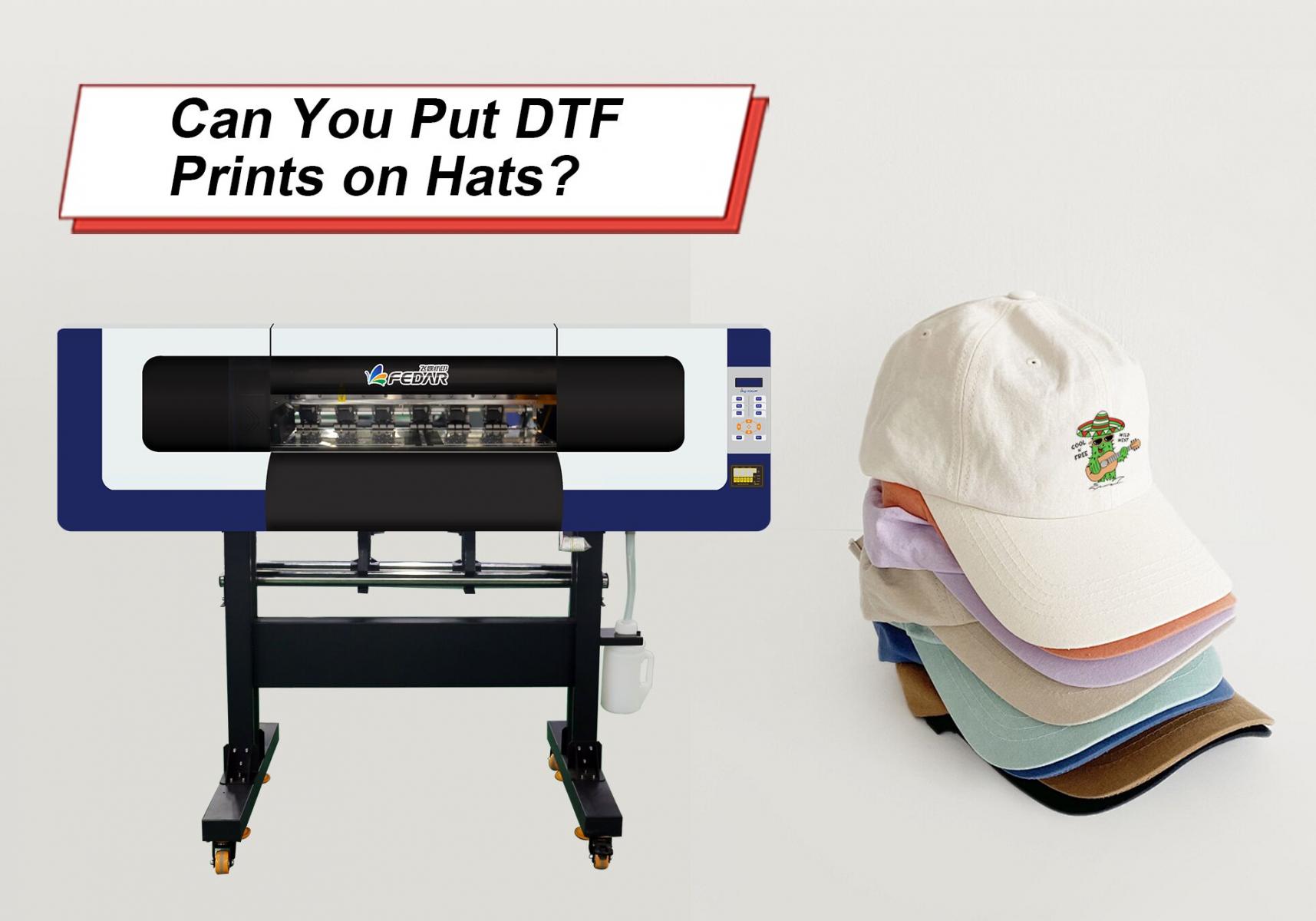21
Apr

DTF printing has become a new way to personalize clothing, and hats are now a popular item for customization. In this article, we’ll see if we can DTF print onto hats and how to do it from start to finish with professional results.
We will walk you through the complete how-to-do, some creative options, and how to deal with challenges. Read along to discover how DTF hat printing can amp up personal flair or business branding.
DTF stands for Direct-to-Film printing, which involves printing digital designs onto a special film with special inks. The printed design is covered with a powder adhesive that melts with heat to stick the design to the fabric. The heat sets the ink into the fabric, which makes it strong and vibrant. DTF requires no pre-treatment of fabric and can be used on many hat materials.
The digital image is prepared and printed on a special film using state-of-the-art equipment. Once printed, the adhesive powder is evenly distributed to cover all design areas before the curing stage begins.
The powder is melted with a heated press to bond the pattern to the cap. This produces a nice, durable transfer that holds up well even on the hat’s contoured and uneven surface.
Material consideration is important when selecting hats for DTF transfers since not all fabrics take to the bonding process equally well. Anything made out of polyester is ideal because it allows the ink to grip properly, and poly-coated materials also work fine with DTF.
The fabric should work perfectly with the DTF process. Selecting a proper base material is essential for a good, lasting print.
The hat should be clean of dust, grease, or wrinkles before you apply the DTF transfers. The best surface is produced with a gentle wash using a mild detergent, and then air drying completely.
Make sure the hat doesn’t have any tags or anything that would get in the way of printing. This carefulness helps the transfer adhere properly and makes a smooth finish.
DTF printing can create designs with great detail. It can do full-color printing, which makes it ideal for logos or photos. Nice and sharp at high resolution, which makes for prints that look a lot better on caps.
DTF prints are especially durable, since the adhesive bonds with the fabric fibers. This process keeps the design colorful and prevents it from cracking, peeling, or fading even after many uses and washings.
It is also relatively inexpensive for short-run runs and on-demand printing, which helps small businesses and start-ups. There’s a great return on quality and reliability if you invest in DTF technology; it lowers your overall production costs.
It begins with a digital image file that’s as high-resolution as the intended printed version and designed for color accuracy. Use professional graphic design software to precisely arrange every gradient and line of the art. Do test prints and adjust colors and details on graphics before you pull a full run.
For a successful DTF transfer, you need a heat press that’s calibrated to apply even temperature and pressure. The pressing process might require special fixtures to stabilize the hat’s curved surface. This allows for a clean, continuous transfer, which is better and more seamless, and makes it more durable.
DTF printing gives designers unparalleled artistic flexibility to print fancy graphics, detailed designs, and even photographs on hats. It allows artists and brands to play with textures, finishes, and designs to make beautiful hats. It can help you express yourself, advertise a business, or celebrate an event.
Hats are a very popular choice for promotion. DTF printing can help you make designs that appeal to people. Personalized hats are great for business events, giveaways, and marketing that stay in people’s minds. Creative designs can increase the brand's presence in the marketplace, especially with DTF prints on hats.
DTF printing works on a variety of fabrics, but it is most effective on those containing polyester. Prints on cotton or other natural fiber hats might not adhere as well, making them less durable.
But before launching a massive production run, it’s critical to run extensive tests with multiple fabric types to figure out what works best. Knowing these material constraints allows one to choose the right hats and tweak techniques.
One major obstacle to printing on hats is the curved surface, which makes it difficult to get an even transfer. Irregular surfaces can cause problems with heating, which can lead to uneven printing or ghosting of the design.
These problems can be avoided by using fixtures that are bent to the hat’s shape. These devices regulate pressure and temperature to ensure a smooth transfer and high-quality appearance.
DTF hat printing is an exciting, flexible process that produces stunning personalized caps with eye-popping, long-lasting prints. With constant learning and proper tools, anyone can achieve perfection in hat customization and get ahead in the market. Addressing issues such as material compatibility and curves allows designers and manufacturers to create unique, durable hats.
Good luck with your DTF printing journey!
If there's anything we can do to further showcase machines' features, please let us know.
